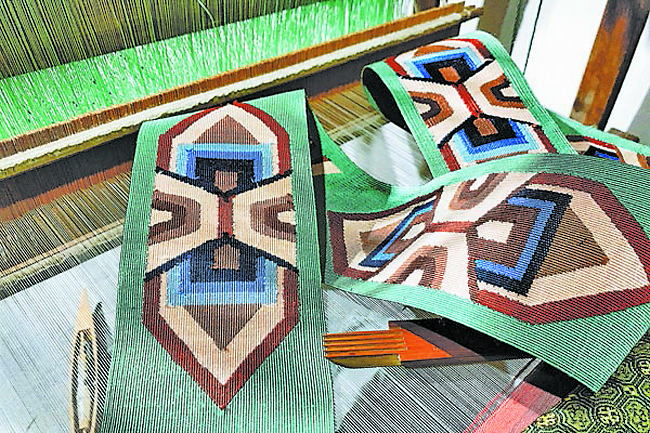CHINA DAILY – Ancient silk tapestry technique comes back to life at the hands of a determined weaver, Yang Feiyue reported.
Hao Naiqiang is living like a recluse at the foot of a mountain in the countryside near Taihu Lake, of Suzhou city, East China’s Jiangsu province.
“It’s away from the hustle and bustle of the outside world, better for me to concentrate the mind and explore kesi,” said the 32-year-old.
Kesi is silk tapestry with pictorial designs. Its Chinese designation means “cut silk” and it derives from the visual illusion of cutting thread, even some kind of effect of engraved relief, that is created by distinct, unblended areas of colour.
The earliest existing kesi products date back to the Tang Dynasty (618-907), but the technique first became widely used during the Song Dynasty (960-1279) and it became particularly popular during the Ming (1368-1644) and Qing (1644-1911) dynasties.
It is one of the very few weaving techniques that cannot be mechanised, and was added to United Nations Educational, Scientific and Cultural Organization (UNESCO) list of Intangible Cultural Heritage in 2009.

Hao was drawn to kesi in his sophomore year when his professor at Soochow University arranged for his class to tour a private workshop.
He was mesmerised by how a delicate kesi product could come out of a rough “machine” – a tapestry loom that looked just like a pile of logs.
“It was exquisite, just like an engraving,” Hao said. “You have to see how the shuttle constantly shifts horizontally and vertically and watch the kesi work come out of the loom to believe it.”
For kesi, raw silk is used for vertical threads and colourful boiled-off silk for horizontal threads. The vertical threads are continuous while horizontal ones are not. The colourful threads are weaved to create patterns. Held against the light, the patterns seem carved or engraved.
“It was simply magical,” Hao said.
Kesi had already been etched on Hao’s mind, albeit vaguely, when he learned about it by reading A Dream of Red Mansions, a classic Qing Dynasty novel, in his early school years.
“In the book, kesi was described as splendid, and was exchanged as gifts among the wealthy, so I imagined that it must have been something extraordinary,” he said.







